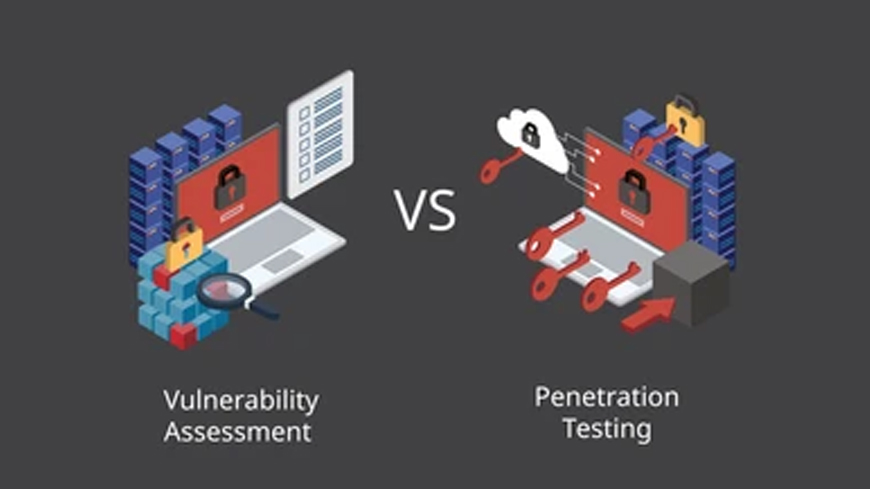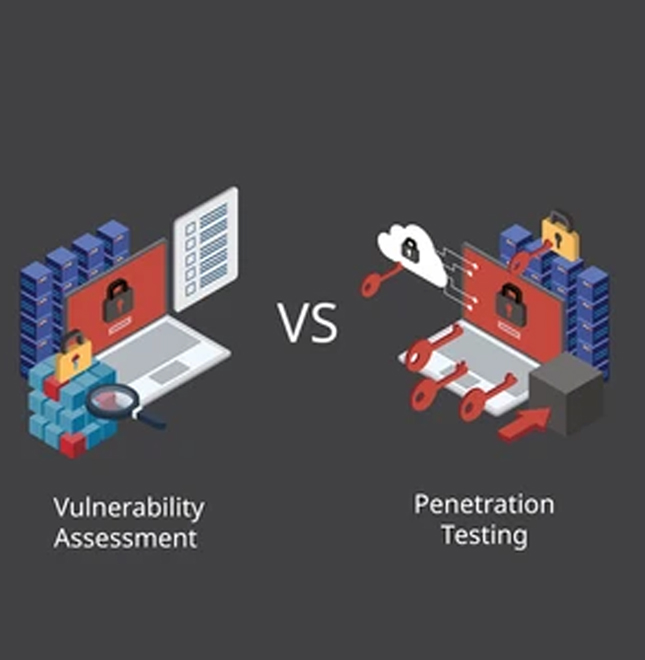
Why VAPT is Critical for Securing AI-Powered Applications
Artificial Intelligence (AI) has become a cornerstone of modern technological advancements, revolutionizing industries from healthcare and finance to retail and manufacturing. AI-powered applications are transforming how businesses operate, analyze data, and make decisions. However, with these advancements comes a new wave of security challenges. As AI continues to evolve, so do the threats targeting AI systems, making Vulnerability Assessment and Penetration Testing (VAPT) more crucial than ever.
In this blog, we’ll explore why VAPT is essential for securing AI-powered applications and how organizations can protect their systems from emerging threats.
The Growing Threat Landscape for AI-Powered Applications
AI-powered applications, from machine learning models to automated decision-making systems, are increasingly becoming targets for cyberattacks. Unlike traditional software, AI systems rely heavily on vast amounts of data and complex algorithms, which introduce unique vulnerabilities. Some of the key risks include:
- Data Poisoning: Attackers can manipulate the data used to train AI models, leading to skewed results or even malicious behavior in AI systems.
- Adversarial Attacks: Hackers can create inputs specifically designed to deceive AI algorithms, causing incorrect outputs, often without detection.
- Model Theft and Reverse Engineering: Attackers may attempt to steal or reverse-engineer AI models, which could result in intellectual property theft or the deployment of malicious versions of the models.
- Privacy and Compliance Risks: AI systems often process sensitive information, making them prime targets for data breaches. Additionally, non-compliance with regulations like GDPR can lead to legal and financial consequences.
Given these risks, ensuring the security of AI-powered applications goes beyond standard security measures. This is where Vulnerability Assessment and Penetration Testing (VAPT) comes into play.
What is VAPT?
Vulnerability Assessment and Penetration Testing (VAPT) is a comprehensive approach to identifying, assessing, and mitigating vulnerabilities in applications, systems, and networks. It involves two key components:
- Vulnerability Assessment (VA): A process of scanning applications for known vulnerabilities, misconfigurations, and weaknesses that could be exploited by attackers.
- Penetration Testing (PT): A simulated attack on a system, application, or network to discover potential vulnerabilities and assess how well the security measures in place can withstand real-world threats
For AI-powered applications, VAPT focuses on uncovering both traditional software vulnerabilities and those specific to AI systems, such as weaknesses in machine learning models or data processing pipelines.
Why VAPT is Critical for AI-Powered Applications
- Identifying Algorithmic Vulnerabilities
- Mitigating Data Poisoning Risks
- Ensuring Compliance and Data Privacy
- Testing Model Robustness Against Adversarial Attacks
- Safeguarding Intellectual Property
AI models are built on complex algorithms that can be manipulated if not properly secured. VAPT helps identify vulnerabilities in AI algorithms by simulating attacks that exploit these weaknesses. For instance, penetration tests can expose adversarial vulnerabilities, where subtle changes in inputs can cause AI systems to make incorrect decisions. By testing these systems under real-world conditions, organizations can better understand how their AI algorithms respond to threats.
For example, a company using AI for fraud detection may use VAPT to test whether their model can be tricked into allowing fraudulent transactions by altering the input data. This testing ensures that the AI system is robust and can resist such manipulation.
AI models depend on high-quality data to function accurately. However, if the data used to train or update these models is compromised, it can lead to serious security risks. Data poisoning attacks involve introducing malicious data into the training datasets, corrupting the AI model’s predictions and decisions.
VAPT services include assessments of data integrity and security, ensuring that the data pipelines and storage systems used in AI applications are safeguarded against such attacks. By testing the system for vulnerabilities in its data sources and processes, organizations can mitigate the risk of data poisoning.
AI applications often handle large amounts of sensitive data, which makes compliance with regulations like GDPR, HIPAA, and PCI-DSS critical. VAPT plays a key role in identifying potential privacy vulnerabilities within AI systems, ensuring that the applications adhere to regulatory requirements and safeguard sensitive information.
For example, if an AI-powered healthcare system is processing patient data, a VAPT assessment would help identify any potential risks related to data breaches, ensuring that the system is compliant with privacy laws and regulations. This helps organizations avoid hefty fines and reputational damage associated with non-compliance.
Adversarial attacks are a growing concern for AI-powered applications, especially those used in critical sectors such as healthcare, finance, and autonomous vehicles. These attacks involve feeding AI systems with specially crafted inputs designed to cause the model to make incorrect or harmful decisions.
Penetration testing can simulate adversarial attacks to determine how well an AI system can handle manipulated data. This is especially important for AI systems that are responsible for making high-stakes decisions, such as diagnosing medical conditions or detecting fraudulent activities. By identifying and addressing these vulnerabilities, organizations can ensure the robustness of their AI models.
AI models represent a significant investment in research and development, making them valuable intellectual property (IP) assets. However, they are also at risk of being stolen or reverse-engineered by attackers. Penetration testing can help identify potential entry points where AI models might be vulnerable to theft or unauthorized access.
By securing AI models through rigorous VAPT assessments, organizations can protect their intellectual property and maintain a competitive edge.
Best Practices for Securing AI-Powered Applications with VAPT
To effectively secure AI-powered applications using VAPT, organizations should adopt the following best practices:
- Regular Assessments: AI systems are constantly evolving as they learn from new data. Therefore, it is crucial to conduct regular VAPT assessments to stay ahead of new vulnerabilities and emerging threats.
- Focus on Data Integrity:Since AI relies heavily on data, ensure that your VAPT assessments include a thorough evaluation of data sources, pipelines, and storage systems to protect against data poisoning and other data-related threats.
- Test for Adversarial Vulnerabilities: Ensure that penetration tests include simulations of adversarial attacks to evaluate how well your AI models can resist attempts to manipulate their behavior.
- Collaborate with AI and Security Experts: Given the complexity of AI systems, it’s important to collaborate with both AI developers and cybersecurity professionals during the VAPT process to identify and mitigate AI-specific risks.
Conclusion: The Need for VAPT in AI-Driven Security
AI-powered applications offer incredible potential for innovation and efficiency, but they also present new and unique security challenges. As AI systems become more integrated into business operations, securing these applications must be a top priority. Vulnerability Assessment and Penetration Testing (VAPT) is a critical component in safeguarding AI-powered systems against evolving cyber threats, ensuring data integrity, compliance, and model robustness.
At Risknox, we specialize in providing VAPT services tailored to AI-powered applications, helping organizations identify vulnerabilities, mitigate risks, and ensure the security of their AI systems. Contact us today to learn how we can help secure your AI initiatives.
Lets Get Stared with Us.
Call Us Now!







